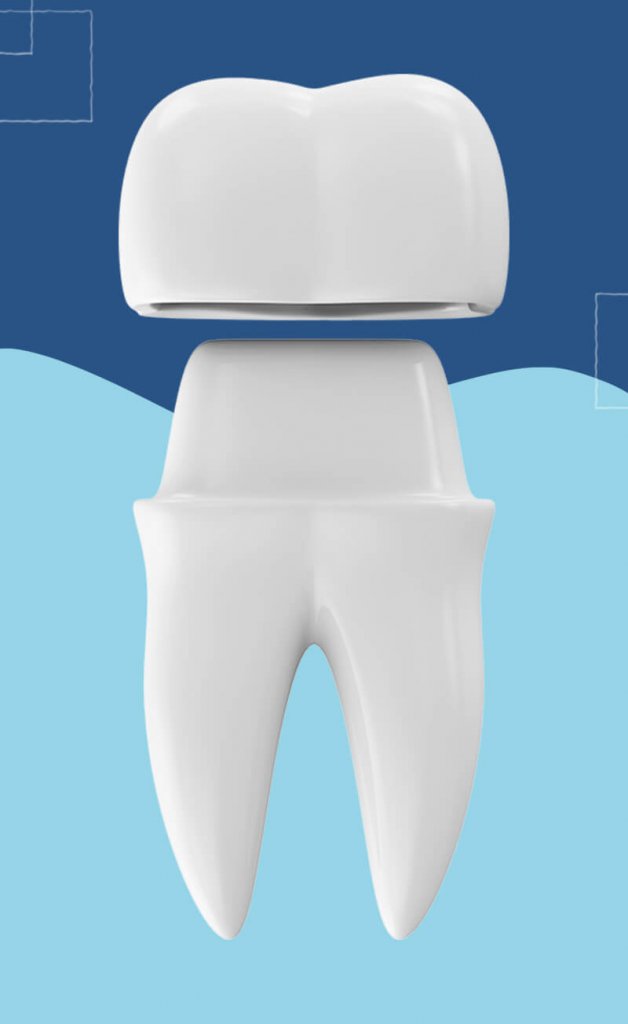The preparation and placement of dental crowns are among the most popular procedures for maintaining a healthy bite and achieving aesthetic results.
What is a dental crown?
Understanding the concept and purpose of a dental crown makes it easier to grasp the steps involved in its preparation. A dental crown is an artificial covering made of a material that completely surrounds and encases the portion of the tooth above the gum line. It restores the tooth’s natural shape, color, and aesthetics. Additionally, in the case of weakened, decayed, or fractured teeth, a crown not only improves aesthetics. But also strengthens the tooth. Crowns can be made from a combination of metal and ceramic or entirely metal-free materials. This solution can be applied to existing natural teeth or implants. In the case of one or more missing teeth, a bridge is recommended if implant placement is not chosen.

When and why might you need a dental crown?
For example, we often recommend this solution if the affected tooth has decay or a cavity that exceeds the size that can be safely filled. It can also be beneficial after root canal treatment to preserve the integrity of the tooth, as root-treated teeth are more prone to fractures without the protection of a crown. Additionally, a crown can be a suitable option if a tooth has suffered significant damage or a fracture that cannot be restored by other means but is still salvageable. It can also be used for purely aesthetic purposes if a patient is dissatisfied with the color, shape, or position of their tooth.
The process of dental crown preparation
To ensure that our patients can smile with confidence again, we guide them through the following steps according to the general treatment procedure.

The first step is always a thorough examination, establishing a diagnosis, and determining the treatment plan in agreement with the patient. This typically takes place during the initial consultation.
The next step is preparing the teeth for crown placement, which involves tooth reshaping, also known as tooth preparation. The treatment is performed under local anesthesia and aims to ensure the stability and longevity of the crown by preserving the tooth’s hard tissues as much as possible. Once the teeth have been prepared, we take an impression and record the bite relationship. Based on the impression, our laboratory begins the crown fabrication process, including pouring the impressions with a hard material and shaping the crowns using the chosen material (metal-ceramic or zirconia). The reshaped teeth are protected with temporary crowns to guard against bacteria and other environmental factors in the oral cavity until the placement of the final crowns.
During the next appointment, the temporary crowns are removed, and the final crowns are tried in. The fit, appearance, and bite relationship are checked, and any necessary adjustments are made. Once the final crowns meet all the criteria, they are cemented or bonded in place using dental adhesives or cement.
Follow-up visits may be scheduled to monitor the patient’s oral health, ensure proper functioning and aesthetics, and make any necessary adjustments if needed.
By following these steps, we ensure that our patients receive high-quality, durable dental crowns that restore both functionality and aesthetics to their smiles.